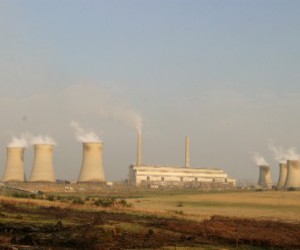Eskom is in the process of developing a strategy which would enable emerging miners – defined as those with a 50%-plus-one-share black ownership – to triple their supply of coal for power generation in South Africa, according to Public Enterprises Minister Malusi Gigaba. This would take transformation in the industry to a new level.
A mining development fund to be established would not only rely on development finance institutions (DFIs) but also welcome private-sector funding bodies that had already indicated a keenness to take part, he told reporters.
Gigaba met emerging miners on Monday to explore partnerships with Eskom, following a session with established coal producers and the SA Chamber of Mines.
He said Eskom’s long-term coal supply requirements created significant opportunities for emerging miners to increase their participation in the industry. This would require significant investment in coal mining.
In addition to coal, suppliers of materials such as limestone would also be needed.
A Request For Information (RFI) for coal supply from emerging black miners was imminent with procurement plans to be put in place in the first quarter of 2013, according to Eskom officials. However, the utility was ready to move on a project-by-project basis without waiting for a finalised plan.
There are currently 33 Black Economically Empowered (BEE) coal mines in South Africa but, using the Department of Mineral Resources BEE definition of 26% black ownership, many fall short of that 50-plus definition.
According to Mining Weekly Online, currently emerging miners in general – made up of both junior mining companies not owned by blacks and majority black-owned juniors – account for 17% of Eskom's total annual coal spend of R28-billion.
Eskom acting chairperson Collin Matjila said that Eskom was looking to procure “no less than a billion tons-plus” of coal from emerging black coal miners in the next 40 years.
Eskom currently buys 130-million tons of the 250-million tons of coal produced a year in South Africa for use in its 13 power stations with eight large mines currently supplying 61% of the output.
An estimated 500 delegates attended Eskom’s well-publicised direct interface with junior coal and limestone miners.






